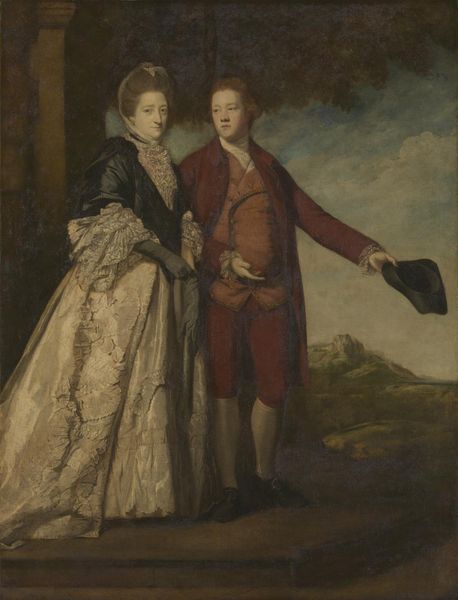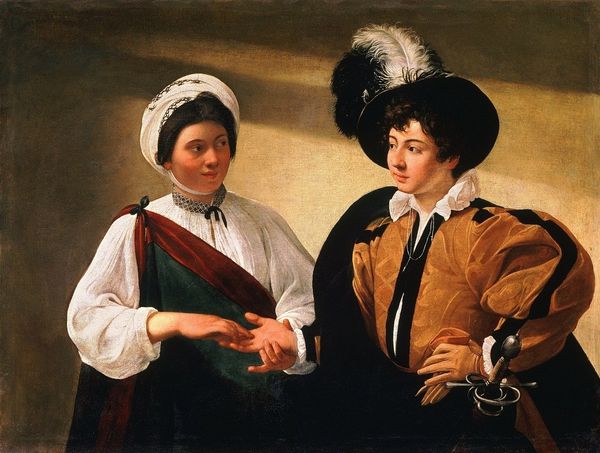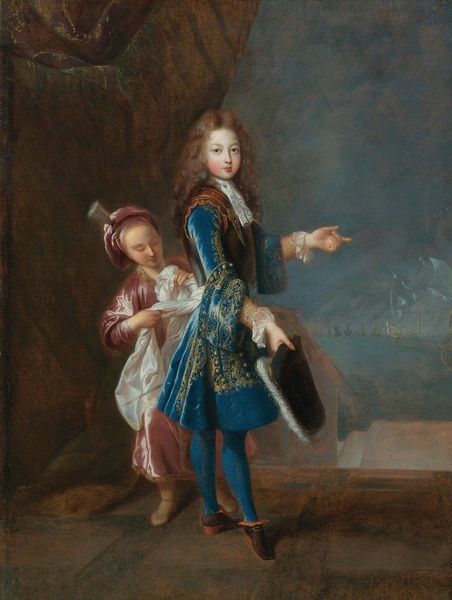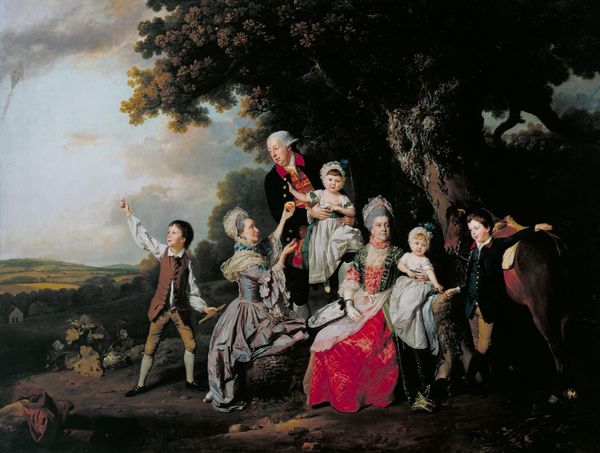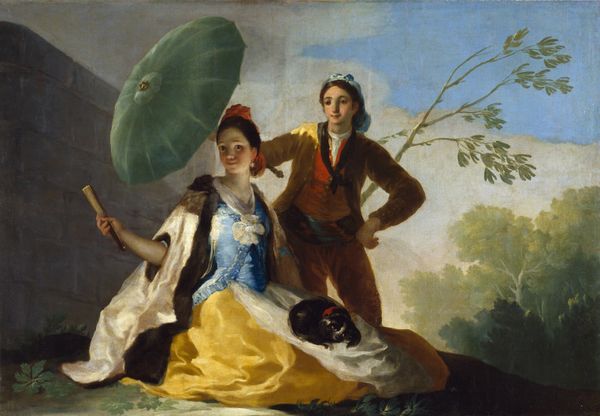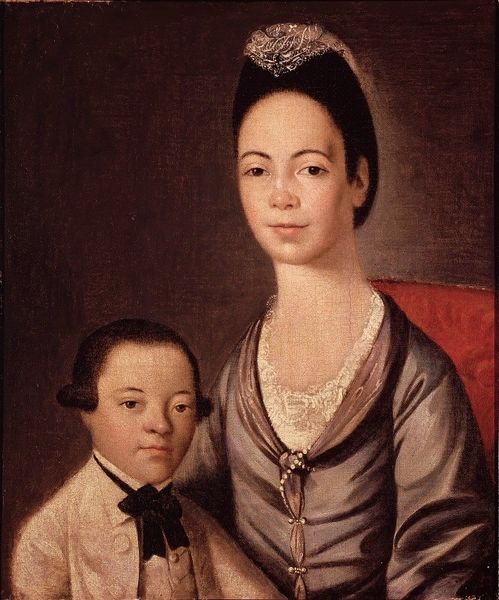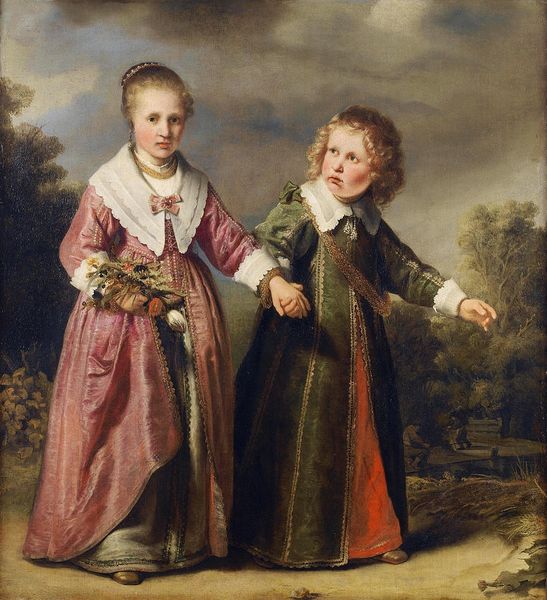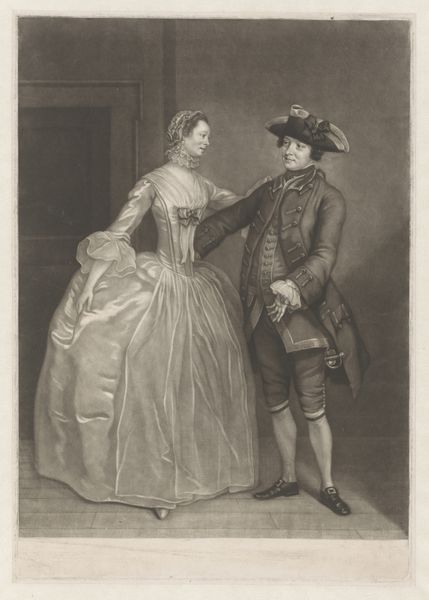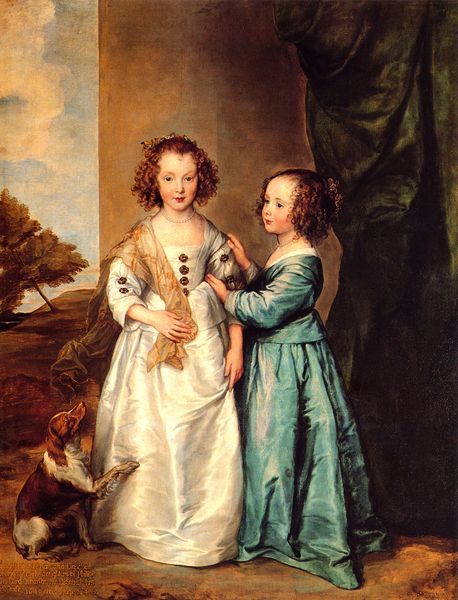
Copyright: Public domain
Curator: Here we have Dmitry Levitzky's "Portrait of E. N. Khruschova and Princess E. N. Khovanskaya," completed in 1773 using oil paint. It offers us a glimpse into the late 18th-century Russian aristocracy. Editor: My initial impression is one of intriguing ambiguity. There's a palpable sense of playfulness and yet, the formal attire hints at a rigid societal structure that belies the casual interaction. The size and materiality give the figures weight that doesn’t align with the lightness of their gestures. Curator: Indeed. Levitzky was commissioned to depict these young noblewomen, not just as individuals, but also as symbols of the enlightened ideals Catherine the Great was keen to promote. Note how the choice of Rococo style lends itself well to communicating wealth and prestige, reflecting the tastes of the Russian court at that time. Editor: I can't help but wonder about the girls themselves. Khruschova's hand playfully touches Khovanskaya's neck, while Khovanskaya returns a more formal gaze. Are they childhood friends, rivals, or simply pawns in the political theater of the court? The portrait becomes a site to unravel the social dynamics of their privileged upbringing. Curator: That is very well observed. Levitzky subtly hints at the constraints these young women likely faced within the court through compositional choices. Though seemingly presented as equals, the slight height advantage and confident stance granted to Khruschova perhaps hint at the implicit power dynamics even amongst girls from privileged families. Editor: Considering the context of serfdom and stark social inequalities, this image also demands a critical examination. Can we truly celebrate its aesthetic value without acknowledging the systems of oppression upon which their elevated status was built? These figures are elevated but are rooted to injustice. Curator: Of course, the historical realities of the Russian Empire are always key to our assessment. Levitzky's work, like much art of the era, functioned as propaganda in its own way, legitimizing power. Looking closer we notice that both have soft smiles on their faces; does this express acceptance of their life style and lack of will for liberation? Editor: Absolutely. This work compels us to engage with the complexities inherent in art produced within inequitable social and political systems. It asks viewers to see beyond aesthetic charm and confront the uncomfortable truths about class, privilege, and representation. Curator: Very well put. Thank you. For me, the work of Dmitry Levitsky serves as an invaluable document and a springboard to contemplate an important historic crossroad. Editor: Agreed. It's a window into the past that also, through thoughtful analysis, reflects on our present.
Comments
No comments
Be the first to comment and join the conversation on the ultimate creative platform.


